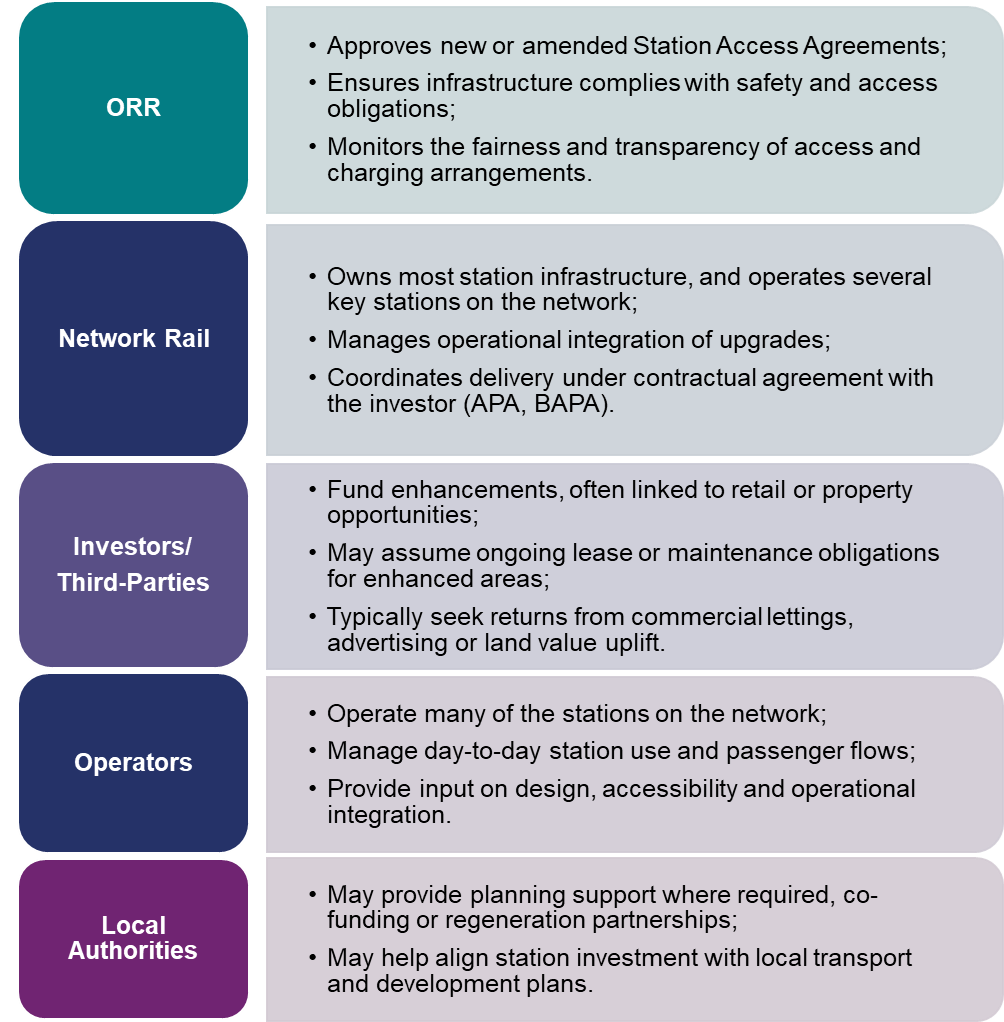Why it’s an opportunity
3.1 Stations serve as gateways to communities and are drivers of local economic development. Commons areas of benefit from investing in stations include:
- Passenger Experience and Revenue Growth
- Retail and service upgrades can drive footfall and spend;
- Advertising and lease revenues create commercial return.
- Urban Regeneration and Mixed-Use Development
- Air rights or adjacent land can support residential, office or civic uses;
- Stations serve as anchors for wider regeneration schemes.
- Network Efficiency and Access to Growth
- New stations or platform extensions improve capacity and resilience;
- Align with wider service planning and demand management.
3.2 Public-private partnerships at major stations (for example, at King’s Cross and Birmingham New Street) have demonstrated how coordinated investment can deliver both commercial returns and public value. For smaller stations, targeted enhancements can also improve service quality, customer experience and stimulate local growth.
Key Stakeholders – Roles and responsibilities
3.3 Below are examples of some of the common responsibilities of key stakeholders, although this may vary depending on the scope of the investment scheme:

Key considerations for investors
| Theme | Detail |
|---|---|
| Planning & Permissions | Must align with local planning rules where required and NR’s operational requirements. |
| Operational Boundaries | Clear separation between public realm enhancements and safety-critical operational zones is required. |
| Accessibility & Safety | All works must comply with PRM-TSI (Persons with Reduced Mobility – Technical Specification for Interoperability), fire safety and station design standards. |
| Stakeholder Coordination | Projects must be co-developed with TOCs, NR and, in some cases, developers or local authorities. |
Regulatory and contractual considerations
3.4 Below is an example of some of the common contractual and regulatory requirements in this area:
3.5 Early engagement and feasibility
An investor will usually enter into a Development Services Agreement (DSA) with Network Rail to explore feasibility, capacity, access and operational constraints. The DSA provides a formal framework for Network Rail to support technical development and confirm whether the proposal can be safely integrated into the network.
3.6 Delivery arrangements
If the scheme is viable, it progresses to an appropriate delivery-phase agreement:
- an Asset Protection Agreement (APA) where the investor delivers works that interface with operational railway assets; or
- an Implementation Agreement (IA) where Network Rail delivers works on behalf of the investor.
Larger schemes (valued over £50 million) may use bespoke contractual terms to reflect project scale and risk.
3.7 Regulatory approvals
The investor and Network Rail will engage with ORR to obtain required consents, including:
- Access rights and station access agreements under the Railways Act 1993;
- Safety authorisation under ROGS for operational integration; and
- Authorisation for placing into service under the Interoperability Regulations, where relevant.
Planning and statutory consents (e.g. planning permission or Transport and Works Act Orders) may also be required depending on the scheme’s nature.
3.8 Assurance and governance
Network Rail will maintain oversight through its assurance and acceptance processes to ensure safety, standards compliance and operational integrity. Governance and cost recovery arrangements are typically managed through the agreed contractual framework.
Checklist for station investors
3.9 Investors should consider the following when developing a station investment project:
- Is there a clear commercial or regeneration rationale?
- Are roles and responsibilities defined across Network Rail, operators and other stakeholders?
- Are operational and non-operational areas clearly identified and agreed?
- Have ORR requirements for access and safety been engaged with early?
- Is the commercial model robust and aligned with station user needs?

